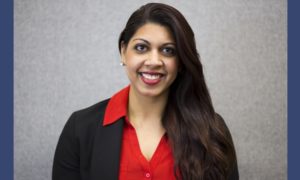Proponents of the Younger Americans Act are learning that even a popular bill with the right sponsors can remain inert in Congress, pinioned by shifting politics, bad timing and bad luck.
The proposal, modeled on the Older Americans Act, would establish a national youth policy and channel federal resources to communities for youth services. The act would shift federal grant-making from its historic emphasis on reactive or prescriptive programming – like offender services or pregnancy prevention – to positive youth development.
“It’s focused on building on and strengthening the assets of young people. It’s not problem-focused,” said Irv Katz, president of the National Assembly of Health and Human Service Organizations. “The solution is not a separate prevention program for [each] problem. It’s positive youth development.”
Although both the House and Senate versions of the bill (H.R. 17 and S. 1005) have bipartisan support, the legislation could very well languish until the 107th Congress adjourns this fall. Both versions would authorize $5.75 billion in grants to states and communities over five years, plus $7 million a year for research and training.
The Senate bill is sponsored by Sen. James M. Jeffords (I-Vt.), who at one time probably had the best shot of steering the legislation through the committee process. But Jeffords introduced his version of the bill in June, a month after he left the Republican Party. His switch cost him his seat as chairman of the Health, Education, Labor and Pensions Committee, which is the committee of jurisdiction. It also shifted balance of the once evenly divided Senate to the Democrats.
The new committee chairman, Sen. Edward Kennedy (D-Mass.), is one of five co-sponsors of the Jeffords legislation. Another co-sponsor, Sen. Christopher J. Dodd (D-Conn.), chairs the subcommittee on Children and Families. Dodd’s subcommittee would act on the legislation first.
With Kennedy and Dodd in position, the bill would seem ripe for action in the second session of Congress this year. But neither has indicated when or if the bill will make the agenda. “It’s a worthwhile bill he’d like to work on,” said Kennedy spokesman James P. Manley. But Manley made it clear that it’s up to Jeffords to take the initiative in advocating for the bill.
Regardless of how popular a bill may be, it can go nowhere without support from the subcommittee and committee chairmen.
The education committee recently finished an exhaustive three-year effort to reauthorize the Elementary and Secondary Education Act. Now, in addition to pursuing his own priorities (such as raising the minimum wage), Kennedy also could get tied down negotiating an agreement on health care legislation. The nation’s welfare laws also expire in October and are slated to be be reauthorized.
Committee politics could also cause problems. Jeffords remains on the committee, but would not likely get support from his former Republican allies, still smarting from losing the majority through his defection.
Furthermore, Jeffords lost most of his committee staff when he switched parties, making it more difficult for him to carry a bill through committee. He is also focusing his energies on his new role as chairman of the Environment and Public Works Committee.
“Someone’s going to have to be the water carrier,” said Kimberly Barnes-O’Connor, a former Jeffords aide who worked on the Younger Americans Act for years before Jeffords’ party switch ended her stint on the Hill. “I think Kennedy is interested, but not willing to do the legwork. That was our role.”
Dodd is the obvious candidate to move the bill forward. “It’s going to be critical to get Dodd more involved,” Barnes-O’Connor said.
His willingness is unclear. While he remains “very much in support of the bill,” a Dodd spokesman said, the legislation is not on Dodd’s short-term agenda. None of the other three Senate co-sponsors is on the committee.
Bleak to Bleaker
If prospects weren’t muddy enough, the terrorist attacks of Sept. 11 started a chain reaction that further delayed consideration of the bill. Congress shifted its focus to national defense and a struggling economy.
An envelope containing anthrax spores caused further problems. The Republicans’ committee staff has offices in the Hart building, which was closed in mid-October. Subcommittee offices for both parties are also in Hart. Staff members had to leave everything behind when the building was sealed to contain the spores and then to be fumigated. The building didn’t reopen until late January.
If prospects look poor in the Senate, they are even more bleak in the House. The House bill, sponsored by Rep. George Miller (D-Calif.), has 72 co-sponsors – or nearly 16 percent of the chamber – including 15 Republicans. Miller is the ranking Democrat on the Education and the Workforce Committee, which is the committee of jurisdiction on the House side.
But committee Chairman John A. Boehner (R-Ohio) is not a co-sponsor, and has not decided if the bill will make the committee agenda. “There’s no guarantee,” a Boehner aide said.
Nor is Rep. Michael N. Castle (R-Del.) a co-sponsor. Castle is chairman of the subcommittee on Education Reform, which would work on the initiative before it gets moved up to the Workforce Committee. Castle is focusing on other issues this session.
Tweak Time
Yet supporters of the act remain surprisingly optimistic. “I don’t think it’s the real world to see this as a one- or two-session project,” Katz said.
Youth-serving members of the National Assembly, organized into the 39-member National Collaboration for Youth, are spearheading the national effort to enact the YAA.
A few Washington, D.C., representatives of national groups that belong to the collaboration have been meeting with key congressional staff this year to discuss the bill and how to move it forward. They were told the current “budget crunch” will make passage difficult this year, according to one of the members who attended the meeting.
But Phillip Lovell, director of policy for Campfire USA, a collaboration member, said, “I think we’ve got a good shot. Given, after 9-11, no domestic issue has really moved forward except education. We’re strategically situated in the Senate; we have some work to do in the House.”
Although the proposal has been floating around in some form or another for nearly a decade, congressional staff told coalition members in early January that the introduced versions need some “tweaking” before members can fully support the legislation.
“We may not have clearly articulated the unique need for and value of the YAA” to lawmakers, Katz said. “We can do that.”
Changes are not expected to be dramatic, collaboration members said. “I would describe it as perfecting the legislation,” said Robert K. Reeg, director of public policy at the D.C.-based National Network for Youth.
The public may also need some clarification of the need. Conservative scholars at several think tanks were not aware of the proposal at all, and others said it sounded unnecessary.
“It sounds like so many other programs. There’s billions of dollars being poured into these programs” from the government and community organizations, said Darcy Olsen, executive director of the Goldwater Institute. “These kids don’t need new programs, they need to make better use of the resources that already exist.”
Youth Workers as Lobbyists
Coalition members are turning to their own organizations to jump-start a grass-roots campaign to increase the pressure on Congress.
“It takes a lot of work to get grass-roots involved,” said Melinda Hudson, senior vice president of America’s Promise – the Alliance for Youth, a collaboration member. The goal is to get the people who work with children to impress upon Congress the need for a youth policy. “We want to engage the experts out there who have been working with kids.”
The National Network for Youth included a brief stop on Capitol Hill as part of a conference that it held last month. Lawmakers sponsoring the legislation were given awards by children and youth from different programs. The idea, Reeg said, was to show lawmakers and their staff who would benefit from the legislation.
Reeg and other collaboration members considered the award ceremony a success, although Jeffords and Kennedy did not attend and were represented by staff.
The proposal’s chances for enactment took a small step forward when America’s Promise named former U.S. Sen. Harris Wofford (D-Pa.) as its new chairman. In addition to his inside Capitol Hill experience, Wofford helped launch the Peace Corps and recently served as CEO of the Corporation for National and Community Service.
Promoting the YAA will take up “about half my life,” Wofford said at the awards reception. “The other half I’m reserving for myself.”
The coalition includes some of the nation’s top youth development and service organizations, such as Big Brothers Big Sisters of America, the Boys & Girls Clubs of America, the Boy Scouts of America, and Girls Scouts of the USA, to name a few.
Name recognition is an essential part of the coalition’s campaign. It is the national members’ local affiliates and independent youth-serving organizations that would be funded under the YAA.
“It’s critical for the credibility of the approach captured in the legislation,” Hudson said. “These nonprofits are well-known, tested. The person [Congress member or staffer] you are speaking to might have been a recipient of services from one of these organizations.”
Presentations about the proposal and related activities are planned for several other national youth events, said Tim Briceland-Betts, a senior policy analyst with the Child Welfare League of America (also a coalition member) and a co-chair of the collaboration’s legislative committee. Youth attending programs in Washington – such as this month’s National 4-H Council (another coalition member) conference and the National Youth Summit on Preventing Violence – will try to lobby lawmakers in person.
Contact: National Collaboration for Youth, (202) 347-2080, www.nassembly.org.































